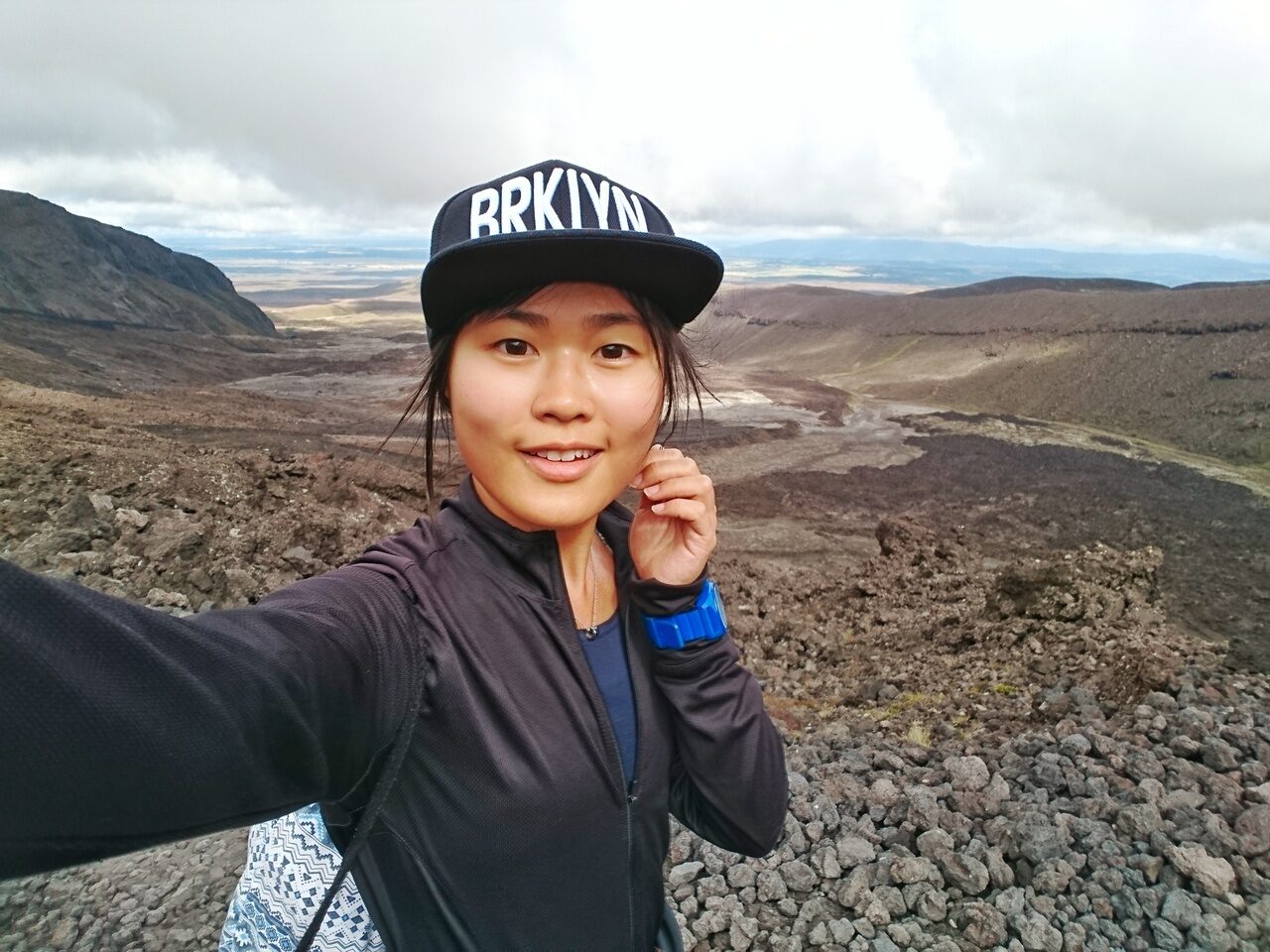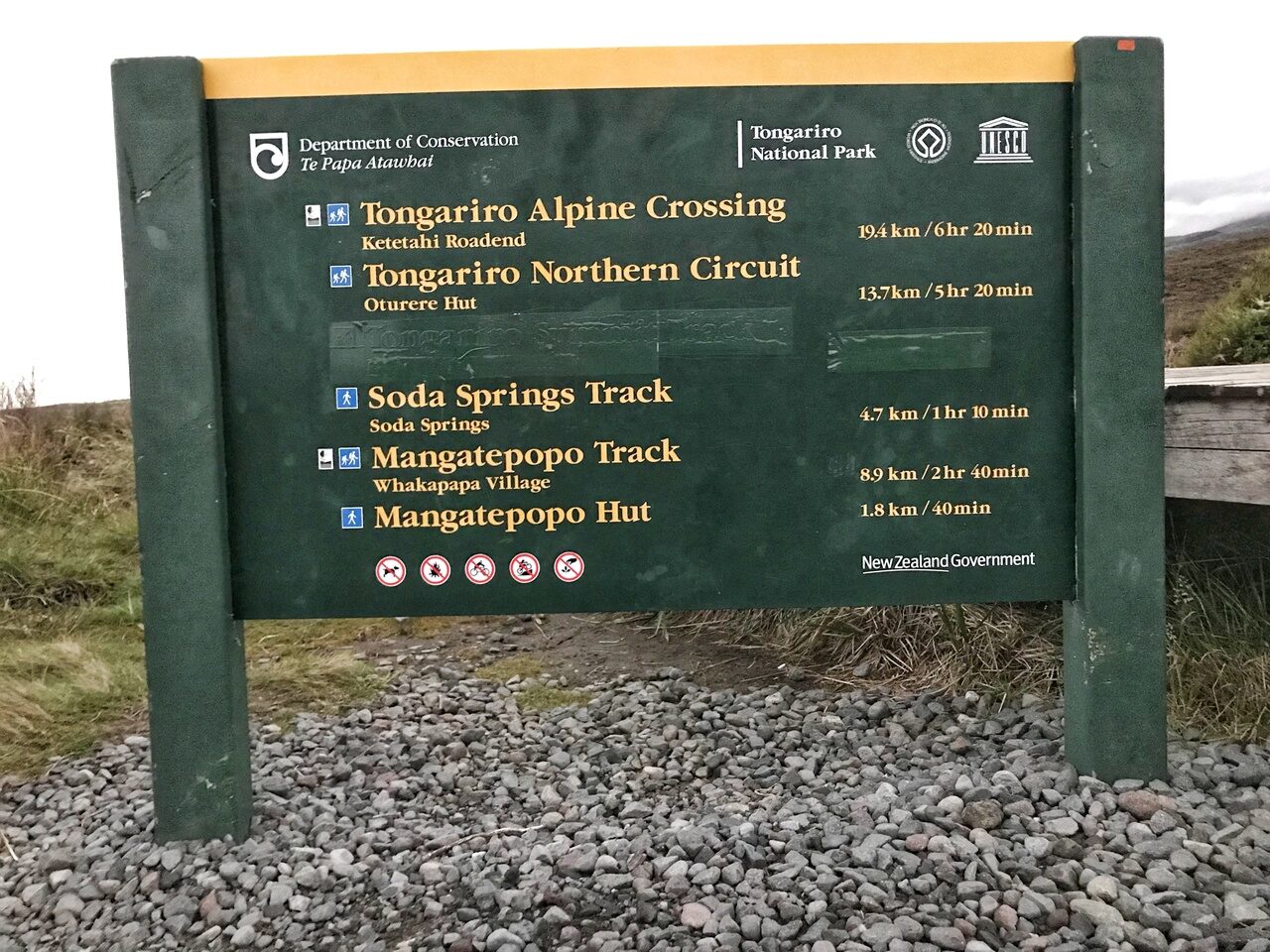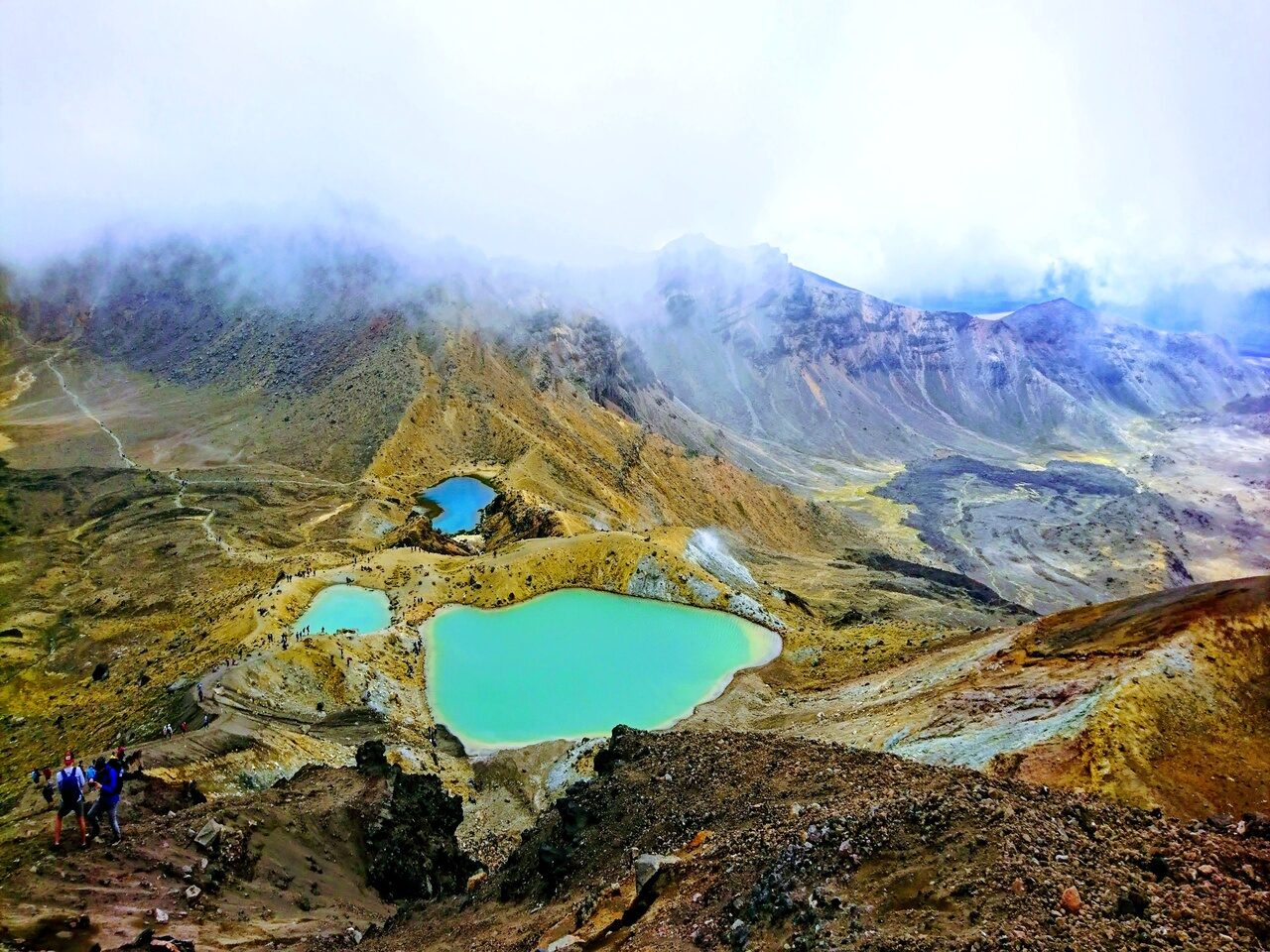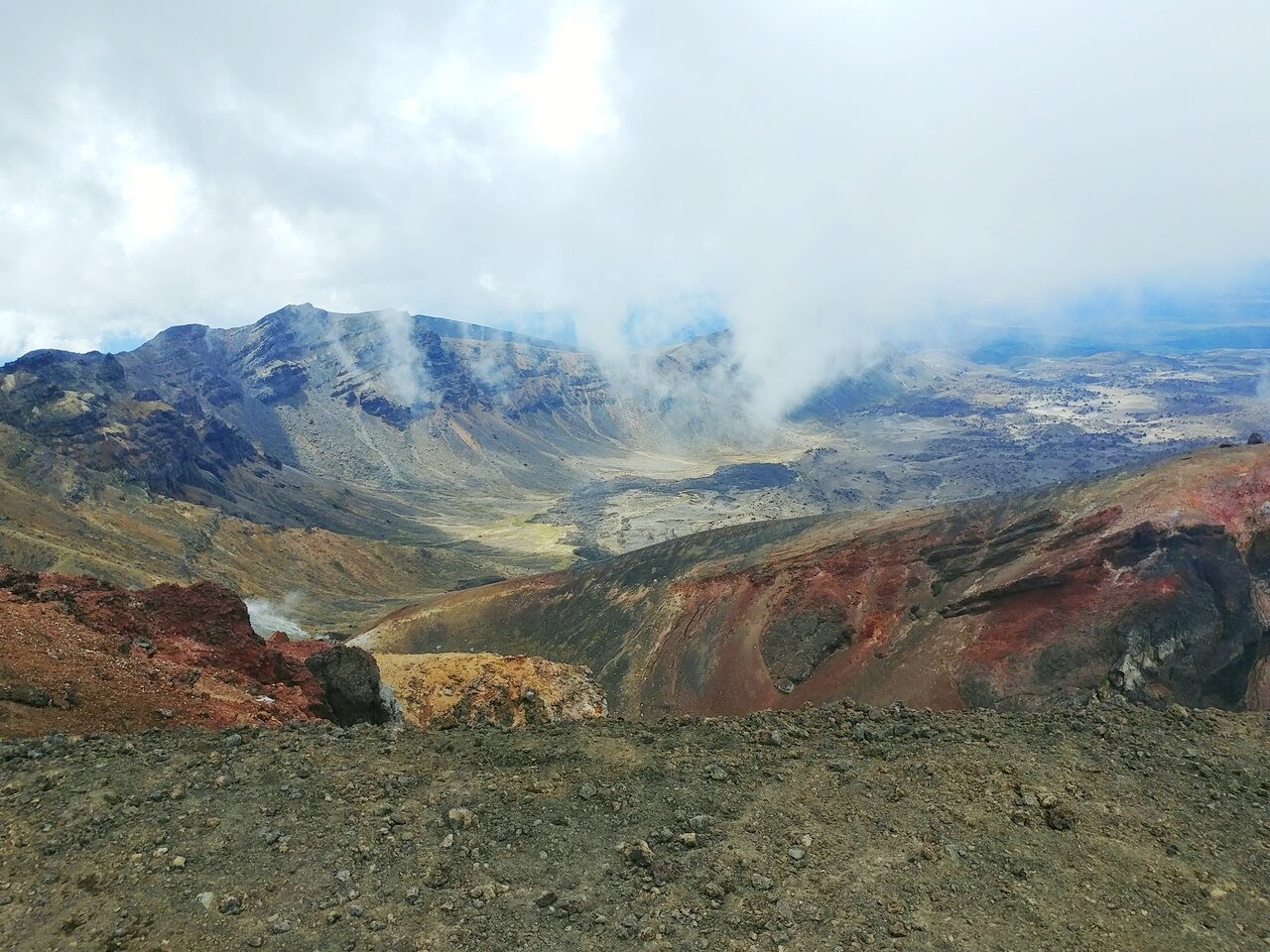Thinking if Tongariro Alpine Crossing is worth adding to your already-packed New Zealand itinerary? Read on to see why you should!! I’ll be sharing my top five experiences that makes this such a unique hike that you cannot miss!
Tongariro Alpine Crossing is one of the best hikes I’ve done in New Zealand. It was the first hike I did that I thought required a lot of preparation and research beforehand. I’ve also gathered some of my tips to completing the Tongariro Alpine Crossing safely and knowing what to expect in your journey. I would recommend this to anyone who is in the North Island and looking for a challenging hike. Although I cannot forget how arduous the journey was, it was an unforgettable experience regardless. To date, I still remember that feeling of satisfaction when we conquered the highest point of the track!
1. Experience 4 seasons in a Day

Coming from Singapore that experiences summer all-year round, this was definitely the best place to experience all four seasons in one day. I’ve experienced temperatures ranging from 5°C to about 20°C all in the same day throughout the hike. I got to tell everyone that I’ve been to summer, autumn, winter and spring within eight hours. Mini achievement unlocked!
On a calm day, the Red Crater is at least 5°C colder than the start of the track. You also subtract another 2°C for every 10 km/h of wind you experience. I remember getting blown at really hard by the strong winds when at the peak of the Red Crater. Everyone was literally fighting against the wind and bending forward at least 30 degrees just to reduce that impact. There were also slight showers of rain at certain parts of the hike. When approaching the end though, temperatures were much gentler then at about 18°C to 22°C.
Also, if you choose to complete the Tongariro Alpine Crossing in winter (June to October), you will experience even more extreme weathers from -5°C to 10°C. There will also be increased risks from snow, ice, avalanche terrain and sub-zero temperatures.
2. All-in-one tramping

This is one of the few tracks that has all difficulty levels of a track in one. The 19.4km track can be broken up into five main parts, of which the track ranges from Easy to Difficult levels. On top of this, I was also welcomed by stunning views of the mountainous ranges!
You can choose to start from either way, but the more popular one would be the one starting from Mangatepopo.
Track Overview
- Mangatepopo Road end to Soda Springs – Easy – 1 to 1.5 hours: The track follows a stream and the edges of old lava flows towards the valley head. Here you can look out for varying patches of vegetation that reveal the age of the surrounding lava rock.
- Soda Springs to South Crater – Difficult – 40 mins to 1 hour: The trail becomes steeper here. Climb from the valley to Mangatepopo Saddle between the mountains of Ngauruhoe and Tongariro. Be welcomed with the stunning panoramic views look out over the volcanic terrain. You can see as far as Mount Taranaki on clear days!
- South Crater to Red Crater (Difficulty Level: Difficult – 1 to 1.5 hours): The highest point of the Tongariro Alpine Crossing. This was also the most challenging. The smell of sulphur is a reminder that this crater is still active.
- Red Crater to Blue Lake – Moderate – 30 mins to 1 hour: The highlight of the track and a great place to pause for photos. The brilliant colour that gives them their name is caused by minerals leaching from the surrounding thermal environment.
- Blue Lake to Ketetahi Shelter – Moderate – 3 to 3.5 hours: The trail continues over Central Crater to the old volcanic vent of Blue Lake. It then rounds the flanks of North Crater and descends to Ketetahi Road end. The final section is a long descend to a cool green forest, a refreshing change to the volcanic landscape.
3. Most spectacular hike in North Island

This is probably also one of the few hikes that covers enough track to go through THREE active volcanoes. Mount Ngauruhoe, Mount Tongariro and Mount Ruapehu. How often do you get that! The park has active and extinct volcanoes, a diverse range of ecosystems and some spectacular landscapes. That’s how you know this hike is definitely a world-renowned trek that you must cross off the checklist. I was truly engaged throughout the hike by beautiful views of Mother Nature. You will see the never-ending surrounding mountainous terrains, the Blue lakes, the Red Crater, lush alpines, panaramic views of the volcanoes and much more.
Also, see that crazy view of the Blue Lakes above! Looking at natural land forms with my naked eyes never fails to make me go “WOW”. It’s like walking into postcards in real life, and “WOW!” is all I can say to express how I felt.
4. Lord of the Rings: Mount Doom, Mordor

If you’re a Lord of the Rings fan, you would know that the trilogy was filmed largely in New Zealand. Another reason why you must visit the Tongariro Alpine Crossing is because this renowned location is also being used as a filming site! Mount Ngauruhoe was used as one of the most iconic locations of the trilogy: Mount Doom, Mordor.
Yes! Mordor, the land of the Orcs, the Eye. W-O-W!
When I was there, I guess I was just too distracted with the strong winds at the Red Crater that I forgot to take a picture of Mount Doom. As you climb up the red crater and look back, you would see Mt Ngauruhoe. If you have a moment to spare, just replay that scene of Mordor in your mind and you’ll see it staring right back at you! That feeling was so magical to me!
5. Dual World Heritage Site recognition

Tongariro holds a dual World Heritage Site recognition since 1993, acknowledged for both its natural and cultural significance. This is just amazing to me because of how it depicts the connection and interdependence between humans and the environment! Wouldn’t you want to visit such a spiritually beautiful place?
The mountains in this park have cultural and religious significance for the Maori people of New Zealand. It symbolizes the spiritual links between this community and its environment. The World Heritage status of the Tongariro National Park has particularly raised awareness amongst the indigenous Maori owners of the site. It is likely that this will assist future preparation of an indicative list of New Zealand sites.
The World Heritage status has also helped emphasized protection over these areas. Further developments such as extending ski field boundaries or accommodation are now deemed as inappropriate.
Convinced to visit the Tongariro Alpine Crossing now?
So how do you feel after reading the above? Are you convinced as to why you must visit the Tongariro Alpine Crossing now? I definitely would want to give this track another go if I’m there during winter, only because it is an entirely different experience then. Otherwise, you can also visit it during summer like I did back then!




